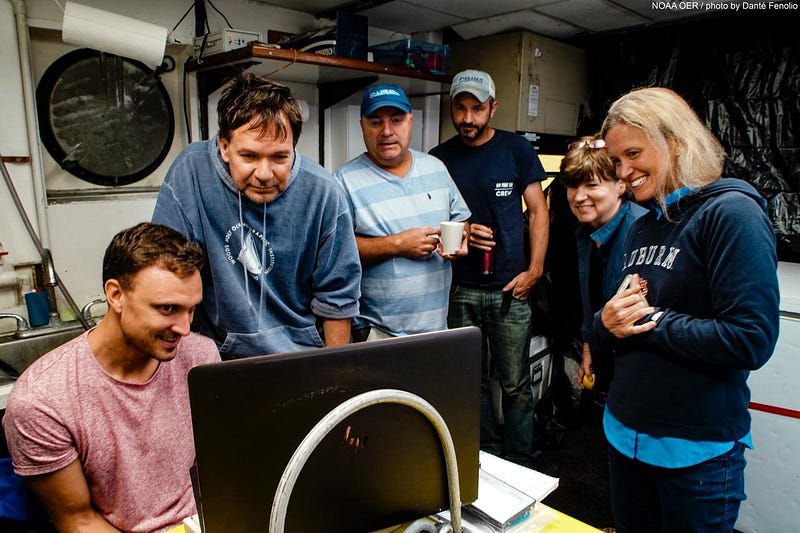First-Ever Live Footage of Giant Squid Captured in US Waters
Written on
Chapter 1: A Historic Discovery
In a remarkable achievement, researchers have successfully captured live footage of a giant squid off the U.S. coast. This marks only the second instance of observing a giant squid swimming alive on camera.
Dr. Edie Widder, the founder of the Ocean Research and Conservation Association, played a crucial role in this groundbreaking project, having also filmed the first giant squid in 2012. To facilitate this endeavor, she developed a unique camera system called MEDUSA, which utilizes primarily red light—an illumination invisible to most deep-sea creatures. The MEDUSA system can be deployed on a tether reaching up to a mile and includes a lure that mimics the bioluminescence of jellyfish, a common target for squids.
Section 1.1: Understanding Giant Squid Behavior
Studying giant squids in their natural environment has proven to be exceptionally challenging, leading to a scarcity of knowledge about their behaviors until recent times. Evidence indicates they engage in aggressive encounters with whales, as evidenced by scars left on whale skin from squid suckers. Remarkably, they possess the largest eyes among known species, second only to the colossal squid, but their behavioral patterns remain largely enigmatic.
Key inquiries include whether they actively hunt for food in the depths or if they prefer to conserve energy by drifting with ocean currents. Current research suggests that these squids do not simply drift passively. Dr. Widder's motivation for creating the MEDUSA system stemmed from her belief that traditional research vessels were too noisy and disruptive for the squids’ natural instincts.
Subsection 1.1.1: The Moment of Capture

When the giant squid finally appeared on the footage, it was an exhilarating moment for the team. Dr. Widder recounted, “People started crowding around, shouting, getting pretty excited, but trying not to get too excited,” as they needed to confirm their initial identification.
For years, most of what we knew about giant squids came from specimens found washed ashore or the remains found in the stomachs of sperm whales. The recent footage, recorded at a depth of 759 meters in the ocean, offers invaluable insights into the squid's hunting habits and habitat preferences.
Following the capture, an unexpected turn of events occurred—a lightning strike hit the research vessel, causing a brief panic about potential damage to their equipment and the risk of losing the footage. Fortunately, the equipment remained intact.
Section 1.2: Exploring the Unexplored Depths
With approximately 80% of the ocean depths still unexplored, there are boundless opportunities for discovery and research. Numerous species continue to exist with significant gaps in our understanding, despite being known since ancient times.
Chapter 2: Further Insights into Giant Squids
The second video, titled "Scientist Explains How She Captured Rare Giant Squid Footage," provides additional context and insights into the filming process and the significance of these discoveries.